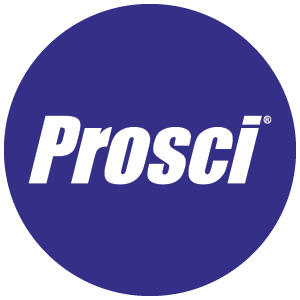Why You Should Improve Process Design With Change Management

7 Mins
Updated: October 30, 2025
Published: December 1, 2024

Business process design is essential for your organization to operate efficiently and hit goals. However, refining and optimizing these processes often necessitates significant changes that can disrupt workflows and challenge employee morale.
This is where change management becomes indispensable. By integrating change management strategies with business process design, businesses can smoothly navigate transitions, minimize resistance to change, and ensure the successful implementation of new processes. This approach to business process transformation is critical for operational success.
This article explores what process design entails and the synergy between it and change management. We offer valuable insights and best practices for individual practitioners and enterprise leaders alike to boost organizational efficiency and drive sustained growth.
What Is Process Design?
Process design is the strategic planning and organization of workflows that enable your organization to achieve its goals effectively and efficiently. It involves identifying, structuring and optimizing the steps, tools and resources needed to complete tasks, ensuring seamless operations and reducing inefficiencies.
At its core, business process design focuses on clarity and alignment—mapping out processes using process maps and process diagrams so every team member knows their role and how their work fits into the bigger picture. Whether it's improving customer relationship management, streamlining supply chains, or making your project management more effective, a well-designed process lays the foundation for consistent and predictable outcomes.
Effective business processes are critical to achieving operational excellence. They ensure that your organization is adaptable to change, encourages collaboration, and meets strategic objectives. By breaking down complex tasks into manageable steps, process designers not only boost efficiency but also minimize errors and redundancies.
However, designing processes is not just about efficiency. It’s about creating flexible and scalable workflows that align with compliance requirements, safety training and customer expectations. Incorporating continuous process improvement principles ensures your organization remains resilient and responsive to evolving challenges and opportunities.
With process design that follows key principles, organizations can unlock new productivity levels, customer satisfaction and long-term success.
The Principles of Process Design
Great processes don’t happen by chance—they’re designed with intention. They use foundational principles that guide every decision and adjustment. By embedding these principles into your workflows, you’ll equip your organization to achieve both immediate and long-term success. Below are the four core principles of effective process design:
Flexibility and scalability
Change is constant. Your processes need to adapt to new challenges and opportunities. Flexible designs allow workflows to adjust to evolving demands, while scalable processes ensure smooth expansion as your organization grows. Whether you're onboarding new employees or deploying new tools, designing with flexibility and scalability in mind minimizes disruptions and maximizes growth potential.
Clear communication
Clear communication is the backbone of any successful process. Well-documented workflows ensure every team member understands their role and how their work contributes to broader goals. Open and ongoing dialogue between teams fosters collaboration and prevents bottlenecks. By prioritizing communication, you create efficient processes that are well-understood across your organization.
Impact of Planning For Reinforcement on Project Success

Continuous improvement
The best processes are never static. Embedding continuous improvement into your workflows keeps them relevant and effective. Regular reviews, feedback loops and updates help eliminate inefficiencies and improve performance. Organizations that embrace this principle can respond quickly to challenges and capitalize on new opportunities, staying ahead of the competition.
Efficiency
Efficiency means doing more with less. Streamlining workflows to reduce redundancies, minimize errors, and optimize resources enhances productivity while improving employee morale. The result? Teams can focus on high-value tasks that drive innovation and allow them to reach their goals faster. This creates a culture where success feels attainable and rewarding, boosting employee morale.
When these principles are applied collectively, they create processes that are adaptable, collaborative, innovative and results-driven. Flexibility ensures resilience; communication builds alignment; continuous improvement drives progress; and efficiency delivers results. Together, they form the foundation for process designs that empower your organization to thrive.
The Role of Change Management in Process Design
Successful change depends on more than a well-designed process; it requires leading your people through the transition. The change management process is the bridge between having a plan and achieving the results you envisioned.
Definition of change management
Change management is a structured approach to guiding individuals through organizational changes to achieve desired outcomes. It focuses on the human side of change, ensuring that people understand, accept and embrace new processes, technologies or structures.
Key components include raising awareness, fostering desire, providing knowledge and training, enhancing ability, and reinforcing new behaviors. By integrating change management with process design, organizations can prevent resistance and increase engagement. This helps you transform uncertainty into confidence and drive sustainable success.
The importance of change management in process design
When it comes to process design, change management is vital. Processes are more than steps and workflows—they’re also about the people who bring them to life. By integrating change management, you can prevent resistance, clarify scope, and improve employee engagement. It helps teams understand the “why” behind changes and feel equipped to adopt new ways of working.
The outcome? Better-designed processes that your people can embrace and sustain as your organization’s needs evolve. Clear communication, targeted training, and strong support eliminate uncertainty, enabling you to maximize the impact of every process improvement.
At its heart, change management prevents resistance and builds resilience, empowering organizations to achieve lasting success.
Benefits of Integrating Change Management With Process Design
Change is inevitable. Success isn’t. Integrating change management with process design gives you the tools to embrace change as an opportunity, not a challenge.
Let’s explore how this powerful combination drives results in four key areas.
Improved communication
A robust communications plan is the backbone of successful change. It ensures messages are tailored to the audience—whether it’s leaders, managers, or people working on the front lines of your organization. By addressing the unique needs of each role, such as CEOs focusing on strategic goals and supervisors guiding personal impacts, communication improves alignment and fosters understanding at all levels.
Initially, your communications plan should focus on raising awareness by answering critical questions like, “Why is this change happening?” and “What’s in it for me?” By providing consistent, relevant messages at each stage of the process, organizations can build trust, prevent resistance and foster collaboration.
Creating an effective Communications Plan is a critical part of the Prosci 3-Phase Process—a structured process for managing change that consists of three phases: Phase 1 – Prepare Approach, Phase 2 – Manage Change, and Phase 3 – Sustain Outcomes. This process helps organizations implement organizational change at scale and navigate it effectively.

Central to this process is the Prosci ADKAR® Model, which outlines the five elements necessary for individual change success: Awareness, Desire, Knowledge, Ability and Reinforcement. Because our methodology integrates our ADKAR Model and 3-Phase Process, organizations can create targeted change management strategies that engage stakeholders at all levels, ensuring that everyone understands the reasons for change and their role in the transition.
Employee readiness
Change management equips teams to adopt new processes with confidence by emphasizing group-level planning and role clarity.
Here are a few ways to build change readiness:
- Tailor plans to real needs – Customize strategies for different roles to ensure every employee knows what they need to do during the change process.
- Build enthusiasm – Engage people in the process and show your teams how changes benefit them and the organization.
- Provide tools for success – Provide targeted training and resources to equip employees with the skills and tools they need to succeed in their new roles.
With a well-prepared workforce, change becomes an opportunity to innovate rather than a source of anxiety.
Increased efficiency and effectiveness
Integrating change management into process design ensures your efforts can drive measurable results. In fact, our research shows that organizations with excellent change management are seven times more likely to meet or exceed project objectives.
For example:
- Velera’s growth success – Velera integrated change management into its processes to achieve higher engagement and smoother transitions. This led to exceptional project outcomes and stronger organizational alignment.
- University of Virginia’s ROI boost – Facing change fatigue, the University of Virginia adopted an advanced change management approach, revitalizing their operations. This led to streamlined processes, immediate improvements and a culture primed for sustained change readiness.
These examples demonstrate how integrating change management with process design can build efficiency into every step, creating lasting value and generating measurable results.
Risk mitigation
Resistance is natural. But you need to anticipate and address it effectively to avoid demotivating people and causing other disruptions. Change management identifies potential challenges early and provides the tools to prevent them effectively.
Here’s how you can reduce your risk:
- Anticipate pushback – Use proven frameworks to identify potential resistance and develop proactive strategies.
- Engage stakeholders – Involving key players in the process prevents resistance and fosters collaboration.
- Adapt with agility – Continuous feedback helps you adjust plans in real time, keeping projects on track.
Integrating change management with process design helps your organization communicate better, prepares your employees for change, and mitigates risks associated with it. By prioritizing the people side of change, you can navigate transitions more effectively, leading to sustained growth and success.
Best Practices for Implementing Change Management in Process Design
Implementing change management effectively within process design requires a thoughtful and structured approach. By following these best practices, organizations can ensure smoother transitions and achieve lasting improvements.
Assess your current processes
Evaluating existing processes before making changes helps identify inefficiencies and potential resistance points. A Change Readiness Assessment is a valuable tool for this step. It measures factors such as employee sentiment, previous experiences with change, and overall organizational culture.
For example, approximately 30% of executives cite mindset gaps as a significant barrier to digital transformation. By pinpointing these gaps, you can proactively address them and align your team’s readiness with your process improvement goals.
Imagine your future state
Clearly articulating the desired outcomes of your process changes is vital to success. The Prosci 3-Phase Process emphasizes defining success by establishing clear goals and metrics to measure progress.
Instead of diving into specific steps, focus first on envisioning what an optimized process looks like. This includes engaging stakeholders to build a shared understanding of success and aligning everyone around common objectives. A unified vision helps drive commitment and ensures everyone is working toward the same goal.
Work with your stakeholders
Engaging sponsors and all the people impacted by the change throughout the process design and implementation phases is key to successful change. Effective strategies include regular communication, soliciting feedback, and ensuring that stakeholders understand their roles in the change process. Our research shows that effective sponsors greatly increase the probability of meeting project objectives.
Correlation of Sponsor Effectiveness With Meeting Objectives

Tools like the Sponsor Start-Up Checklist can guide sponsors in their activities, helping them advocate for the change and address concerns from their teams. Strong relationships with stakeholders help organizations build a coalition of support that raises the likelihood of successful process implementation.
Support and train your team
For people to adopt new processes effectively, they need the right training and resources. For example, studies show that employees who participate in AI training are 89% more likely to say that AI will make them more productive. Tailoring training content to specific roles or groups ensures everyone has the skills and confidence needed to succeed.
A Change Management Plan should include a detailed training plan to build knowledge and ability among employees.
By following these best practices, you create a strong foundation for integrating change management with process design. This approach ensures smooth transitions and sets the stage for aligning your processes with broader organizational goals.
Align Processes With Organizational Goals Through Excellent Change Management
Whenever you introduce a new process, you create a change that can be difficult for people to adopt and use. It doesn’t matter how well your processes are designed. Without adoption, hitting organizational goals is virtually impossible. When you put these best practices into action, you build a foundation for lasting success.
The Prosci Methodology, grounded in years of research, is designed to help you connect the technical side of process design with the human side of change. By leaning into the Prosci structured approach, you can align your processes with your biggest organizational goals. It’s about more than just designing better workflows—it’s about creating the conditions for your team to embrace and sustain change. That’s where the real impact happens: better outcomes, stronger teams, and a business that’s ready for the future.




